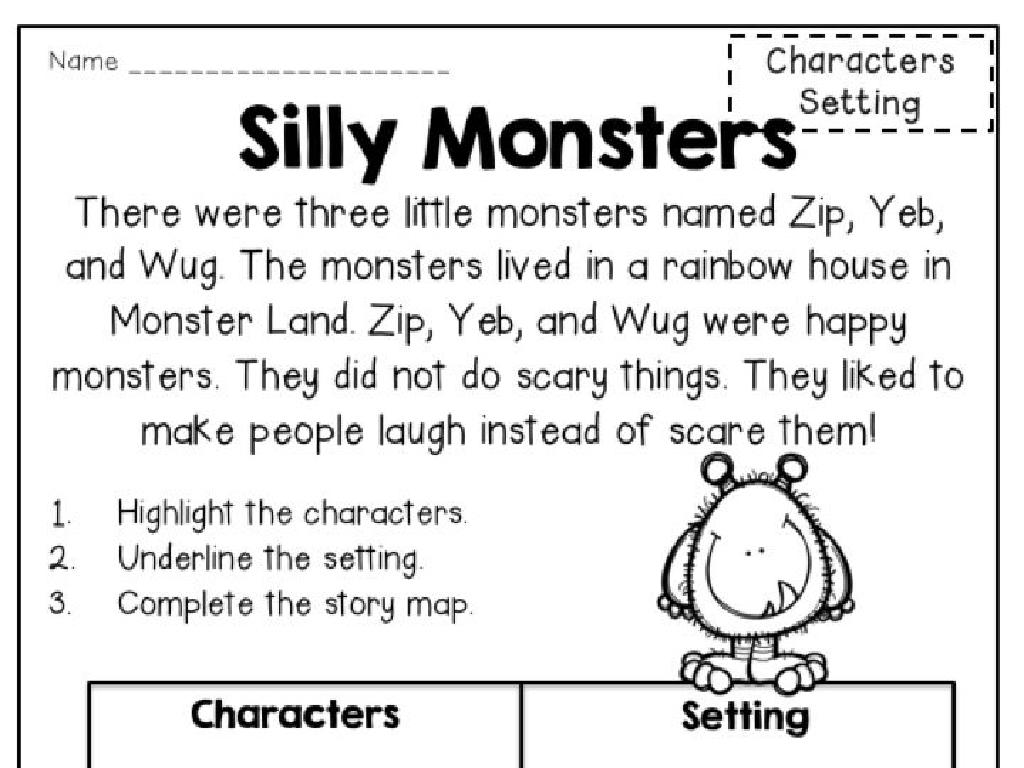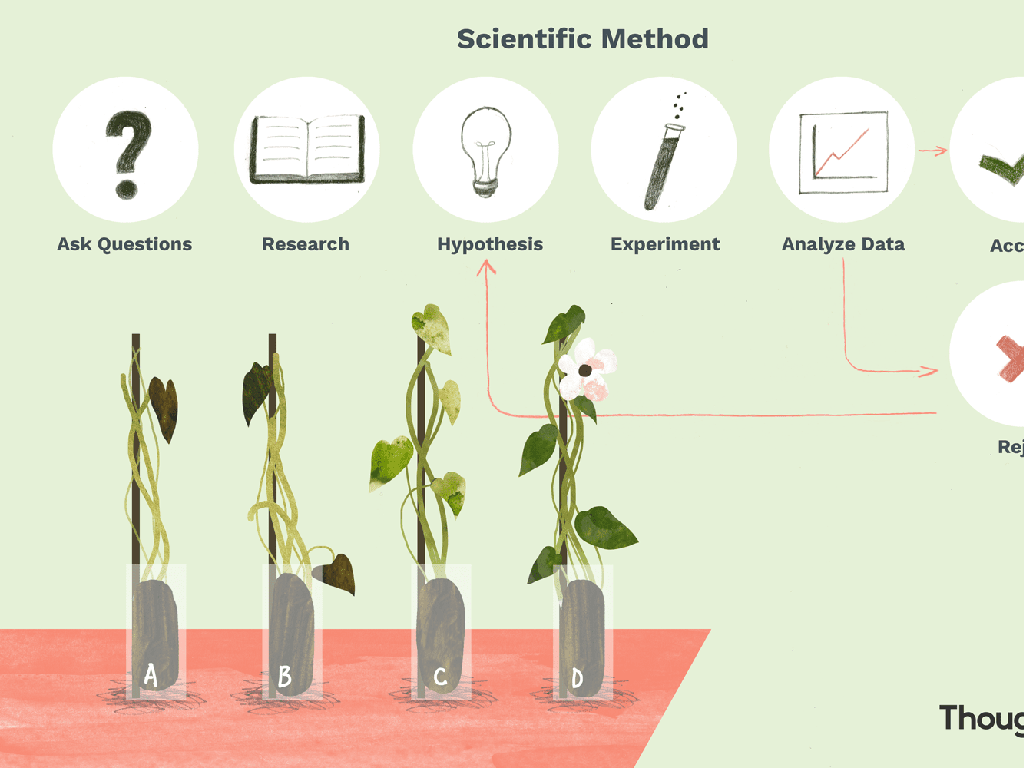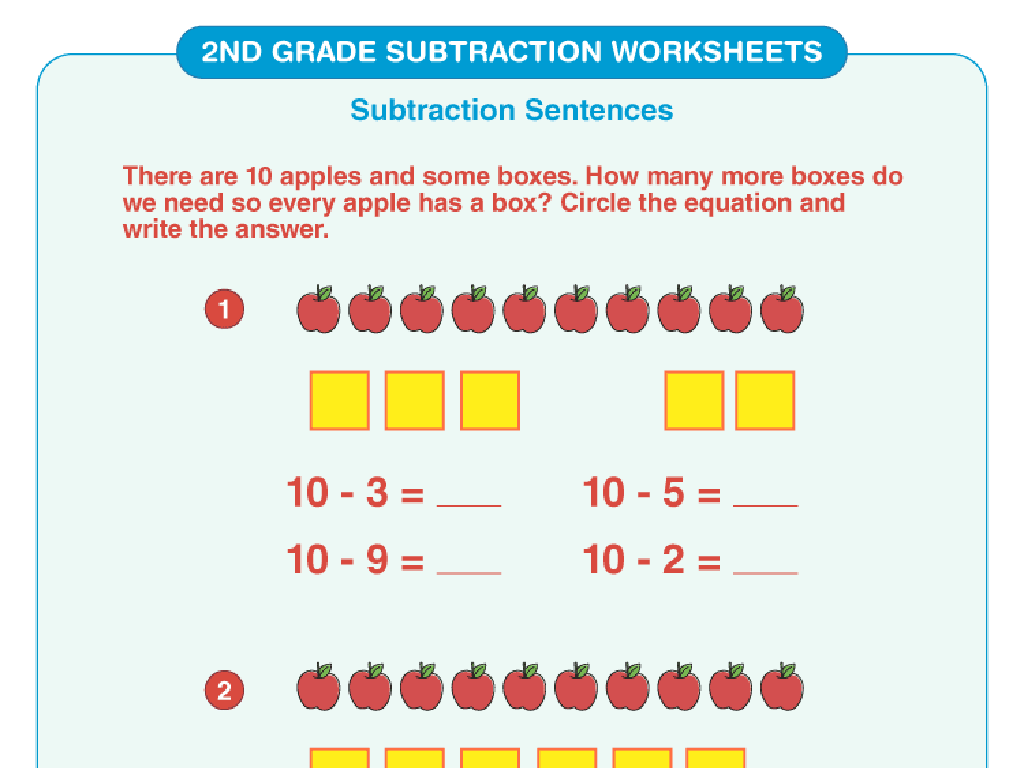Spell The Short E Word
Subject: Language arts
Grade: Second grade
Topic: Short Vowels
Please LOG IN to download the presentation. Access is available to registered users only.
View More Content
Mastering the Short ‘e’ Sound
– Learn about short vowel sounds
– Focus on the short ‘e’ sound
– The sound in ‘bed’ and ‘net’
– Examples: ‘bed’, ‘net’
– Other words: ‘red’, ‘pet’, ‘ten’
– Improves reading and spelling
|
This slide introduces the concept of short vowel sounds to second graders, with a focus on the short ‘e’. Start by explaining what vowels are and then demonstrate the short ‘e’ sound. Use common words like ‘bed’ and ‘net’ as examples and encourage the students to repeat after you. Explain how recognizing vowel sounds is crucial for reading and spelling. Engage the class by asking them to come up with more words that have the short ‘e’ sound and list them on the board. This will help reinforce the lesson and make it interactive.
Exploring Vowels: The Letter ‘E’
– Vowels are special alphabet letters
– A, E, I, O, U are vowels
– Vowels can sound different
– Like ‘A’ in ‘apple’ and ‘at’
– Today’s focus: the letter ‘E’
– ‘E’ as in ‘bed’, ‘red’, ‘net’
– Practice spelling with ‘E’
– Find words with the short ‘E’ sound
|
This slide introduces the concept of vowels to second-grade students, emphasizing the letter ‘E’ and its short sound. Begin by explaining that vowels are the building blocks of words and are essential for word formation. Highlight that vowels have both long and short sounds, and today we will focus on the short ‘E’ sound, as heard in words like ‘bed’, ‘red’, and ‘net’. Encourage students to think of other words with the short ‘E’ sound and how the sound is made with their mouth. As an activity, students can practice spelling words with the short ‘E’ and share them with the class. This will help reinforce their understanding of vowel sounds and improve their spelling skills.
Exploring the Short ‘E’ Sound
– Learn the short ‘e’ sound
– It’s like the ‘e’ in ‘bed’ or ‘pet’
– Say it: eh-eh-eh!
– Find words with short ‘e’
– Examples: ‘net’, ‘red’, ‘ten’
– Practice spelling together
– We’ll spell words as a class and have fun
|
This slide introduces the short ‘e’ sound to second graders, helping them recognize and pronounce it correctly. Start by explaining the sound and providing clear examples such as ‘bed’ and ‘pet’. Engage the class by repeating the sound together. Then, encourage students to brainstorm words that contain the short ‘e’ sound, guiding them with examples if needed. Finally, practice spelling these words as a class, turning it into a fun activity. This will reinforce their understanding and help them remember the sound associated with the letter ‘e’.
Spot the Short ‘E’ Sound
– Find words with the short ‘e’
– Read words aloud as a group
– Identify the short ‘e’ sound
– Does it sound like ‘e’ in ‘net’?
– Compare with the sound in ‘net’
– ‘bed’, ‘pet’, ‘red’ have the short ‘e’
|
This slide is designed for a class activity to help students recognize and pronounce the short ‘e’ sound in words. Start by explaining that the short ‘e’ sound is the vowel sound in ‘net’. Then, present a list of words to the class and ask them to identify which ones contain the short ‘e’ sound. Have the class read the words aloud together to practice pronunciation. Encourage students to listen for the short ‘e’ sound and to compare it to the ‘e’ in ‘net’. This activity will help reinforce their understanding of vowel sounds and improve their reading skills. For the teacher: Prepare a list of words with various vowel sounds, including some with the short ‘e’ sound. During the activity, guide the students through the pronunciation and assist them in distinguishing the short ‘e’ sound from other vowel sounds.
Spelling with Short ‘E’
– Let’s spell words together
– Guess the word from the picture
– For example, a picture of a bed, guess ‘bed’
– Words have the short ‘e’ sound
– Like ‘bed’, ‘net’, ‘pet’, ‘red’
– Fill in blanks to complete words
– Use letters to finish spelling words
|
This slide is designed for an interactive class activity to help second-grade students recognize and spell words with the short ‘e’ sound. Display pictures that represent simple words with the short ‘e’ vowel sound and have the students guess the word. Once they identify the word, write it on the board with blanks for them to fill in the missing letters. Encourage participation from all students and provide positive feedback to reinforce their learning. Possible words to use include ‘pen’, ‘hen’, ‘jet’, ‘wet’, ‘leg’, and ‘nest’. This activity will enhance their phonemic awareness and spelling skills.
Short ‘E’ Word Hunt Game
– Let’s play a word puzzle game!
– Find short ‘e’ words with a buddy
– Words like ‘bed’, ‘pet’, ‘net’, and ‘red’
– See who can find the most words
– Ready, set, go!
|
This slide introduces a classroom activity designed to help second-grade students recognize and spell words with the short ‘e’ sound. Set up a word puzzle on the board or on a handout with a mix of words, ensuring there are several with the short ‘e’ vowel sound. Pair up the students and explain that they will work together to find as many short ‘e’ words as they can within a set time limit. This activity encourages teamwork, sharpens their phonetic skills, and makes learning interactive and fun. After the game, review the words they found and discuss any challenges they faced. Possible variations of the activity could include finding words in a text passage or creating a word search puzzle.
Create Your Short ‘E’ Book
– Start your own short ‘e’ book
– Draw a picture for each word
– Use your imagination for pictures like ‘bed’, ‘red’, or ‘net’
– Write the word below each picture
– Make sure to spell the words correctly under the pictures
– Practice spelling short ‘e’ words
|
This activity is designed to help second graders recognize and practice spelling words with the short ‘e’ sound. Encourage students to think of as many short ‘e’ words as they can, such as ‘bed’, ‘pet’, ‘red’, and ‘net’. They should draw a picture that represents each word to create a visual association. Writing the word beneath the picture will reinforce spelling skills. This book will serve as a personalized learning tool for students to refer back to. For the teacher: prepare a list of short ‘e’ words to help students if they get stuck, and provide examples of how to draw simple representations of each word.
Class Activity: Short ‘E’ Bingo
– Let’s play Bingo with short ‘e’ words!
– Cover the word with a marker if you have it
– First to get five in a row wins
– Listen carefully for the words
|
This interactive Bingo game is designed to help second graders recognize and reinforce their understanding of words with the short ‘e’ sound. Prepare Bingo cards in advance with a variety of short ‘e’ words. Use common words that the students have been learning, such as ‘bed’, ‘red’, ‘net’, and ‘hen’. During the game, call out words randomly and have the students cover the words if they appear on their cards. The first student to cover five words in a row horizontally, vertically, or diagonally should shout ‘Bingo!’ and read the words aloud to confirm their win. This activity not only makes learning fun but also enhances listening skills and quick recognition of vowel sounds. Have a few small prizes ready for the winners to keep the game exciting.
Celebrating Short ‘e’ Mastery!
– Congratulations on learning short ‘e’!
– Practice makes perfect spellers!
– Reading: A fun way to learn
– Reading helps us discover new words and understand their sounds.
– Keep up the great work!
|
This slide is meant to wrap up the lesson on the short ‘e’ sound with positive reinforcement. Congratulate the students on their hard work during the lesson and encourage them to continue practicing their spelling skills. Emphasize the importance of reading as a tool for learning and discovering new words, which in turn helps with their spelling. Remind them that with dedication, they can become excellent spellers. You can suggest that they read aloud to practice the short ‘e’ sound and look for words with this sound in their favorite books. Celebrate their progress and encourage a love for reading and learning.





